Bizarre Zagreb Crime as Person Steals Tram, Goes for Joyride
April the 8th, 2023 - Someone making the decision to steal a tram, take it for a joyride of sorts around town, abandon it at a certain area and then go home, isn't something you hear of on a daily basis. But who could be the one who has committed this rather strange Zagreb crime?
As Poslovni Dnevnik writes, ''the other night just before 23:00, an unknown perpetrator stole a low-floor ZET tram that was prepared to be used as normal and drove it east to Tratinska Street, where they then left the vehicle and went off in an unknown direction.
The ZET traffic control and management centre, in accordance with the provided protocol, sent traffic control out into the field immediately after learning about it, and the police were also called, who found the abandoned tram at Tratinska 65. There were no passengers on the tram during the incident, and no one was injured, nor was the vehicle damaged during the incident. The police investigation into this is currently ongoing, and the video surveillance footage from the vehicle has been seized in order to attempt to find the perpetrator,'' ZET confirmed for Index when asked about this odd (and rather amusing) Zagreb crime.
"ZET promptly launched an internal investigation to determine what happened and who is responsible for this failure, so that it does not happen again," they added.
For more, make sure to check out our dedicated news section.
Canary Black Filming to Disrupt Zagreb Trams for Several Days
November the 10th, 2022 - Canary Black, a film which stars Kate Beckinsale, is still being filmed in different locations across the City of Zagreb. Owing to that continued filming, Zagreb trams won't be running through the very centre of the city during the evening hours for several days.
As Poslovni Dnevnik writes, ZET reported on Thursday that due to the filming of Canary Black in the city, Zagreb trams will not run along Frankopanska ulica (street), Ilica, through Ban Jelacic Square, Franjo Racki street or through Zrinjevac during the night from Saturday, November the 12th into Sunday, November the 13th, and this will last until Thursday, the November 17th.
To be more specific, on Saturday, November the 12th, from 21:15 until Sunday, November the 13th, at 18:00, tram traffic will be suspended entirely along Frankopanska and llica (from Republic of Austria street to Ban Jelacic Square). This will encompass Ban Jelacic Square, Jurisiceva, Franjo Racki street and Zrinjevac due to ongoing filming.
In addition to the above, Zagreb trams in the same locations will not run from Sunday, November the 13th, to Thursday, November the 17th, from 19:15 to 05:30.
At the same time, tram lines 1, 6, 11, 12, 13, 14 and 17 will operate along modified routes in both directions, and bus substitutions of night lines 31, 32 and 34 will drive through the Central Station instead of going through Ban Jelacic Square.
For the same reason, from Monday, November the 14th, to Thursday, November the 17th, from 19:00 to 22:15, bus line 150 will not operate either, ZET announced.
For more, make sure to check out our dedicated news section.
Zagreb Trams - Iconic and Integral to Life in Croatia's Capital
November 20, 2020 – Today is the 20th anniversary of the completion of the Zagreb trams network. Namely, on this day in 2000, the last current line from Jarun to Prečko was opened. To celebrate, we take a look at the iconic, blue trams of Zagreb
It's all too easy to take for granted the things you see every day. That's certainly true of city residents in their feelings for Zagreb trams. As it currently stands, the Zagreb trams network was completed on 20th November 2000, when the existing line to Jarun was further extended to Prečko, which lies to the west of the city centre. In the two decades that have followed, Zagreb trams have cemented their place as an icon of the city, have helped changed the cityscape of Zagreb and have facilitated the friendships, education, careers, relationships and businesses of the Croatian capital over millions of journeys. All without much fanfare or celebration.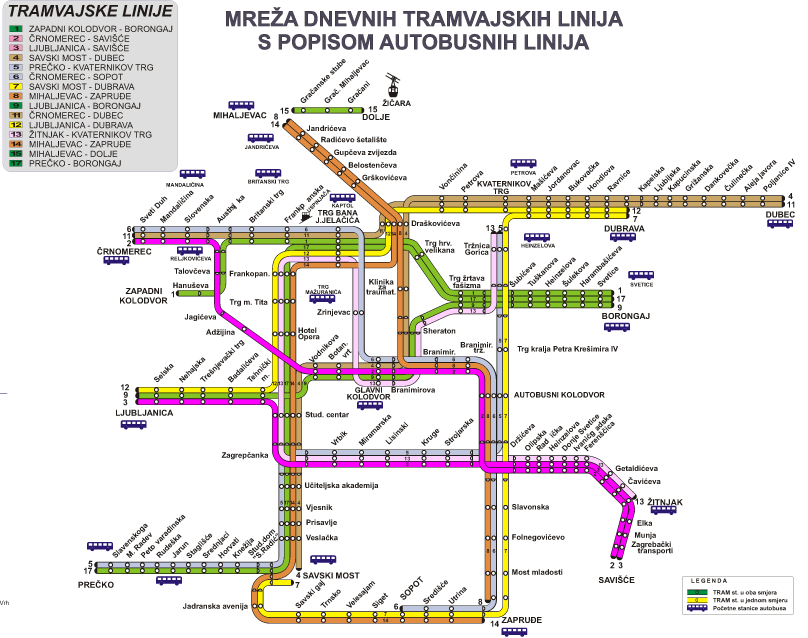 The Zagreb trams network
The Zagreb trams network
The Zagreb trams network consists of 15 lines which connect suburbs as far west from the centre as Prečko (8 kilomtres), as far east as Dubec (8 kilometres), north to Mihaljevac (3 kilometres) and south to Avenue Dubrovnik in Novi Zagreb (an additional line, running further south to Velika Gorica, servicing Zagreb Franjo Tudman airport, is planned). Throughout the night, four lines remain, connecting essential workers, night-time workers and late-night revellers (although they are sometimes replaced by night buses due to maintenance works).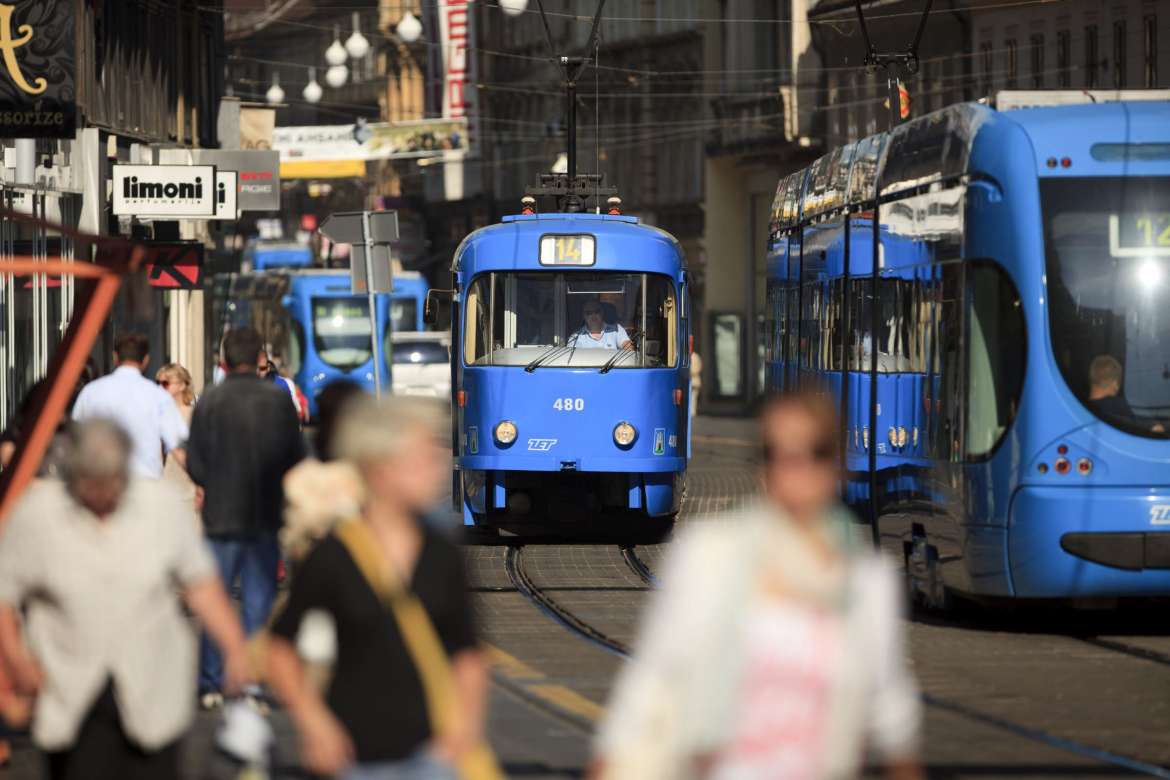 © Romulić & Stojčić
© Romulić & Stojčić
The completion of the line to Prečko catalysed the expansion of the westerly-lying suburbs of Špansko and Prečko. The change visited upon the rest of the city by the Zagreb trams network has been no less fundamental. Certainly, at weekends, Zagreb can confidently claim to be a 24-hour city because of its trams. Day or night, no place within the city suburbs is too far to reach because of Zagreb trams.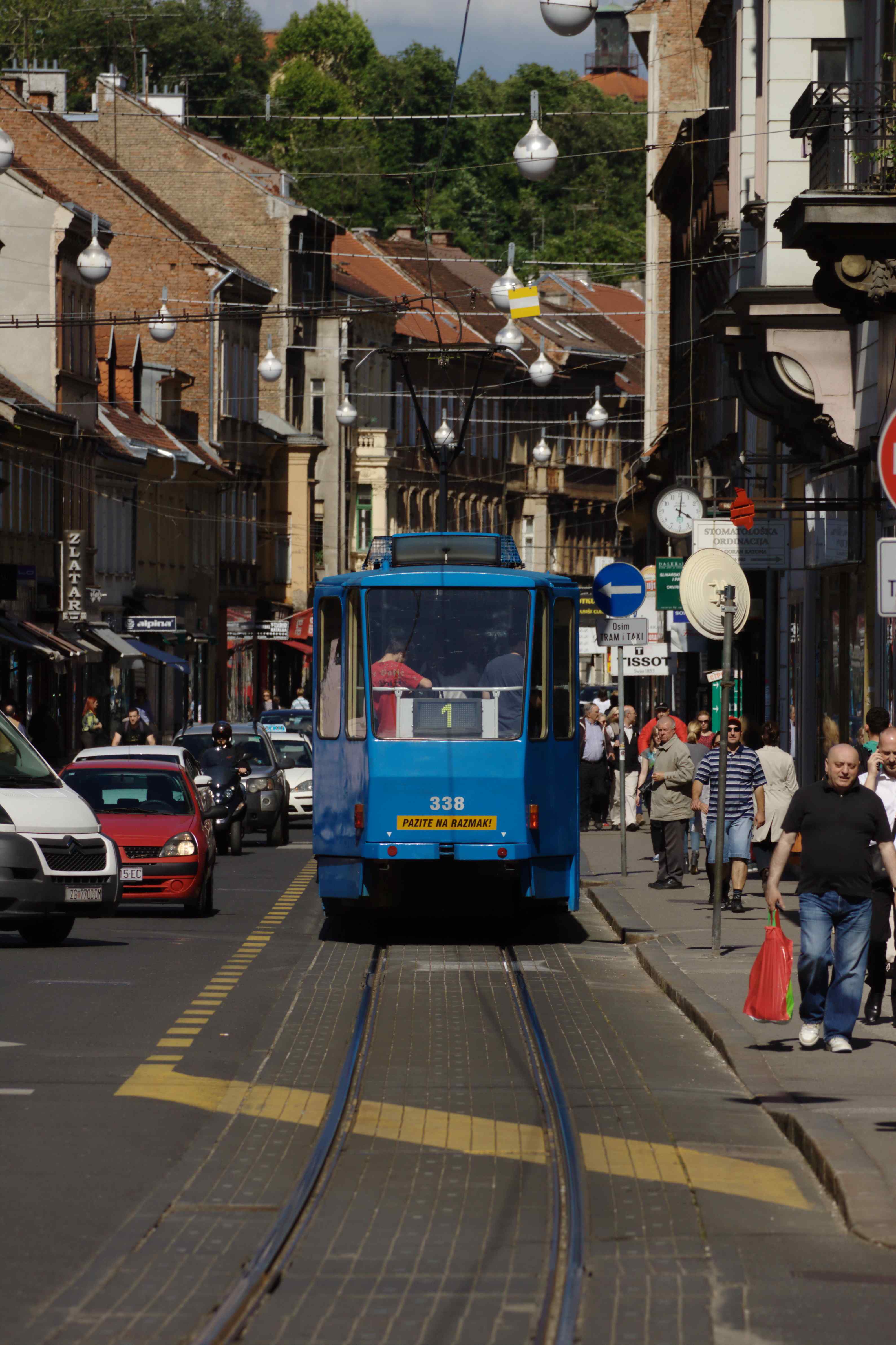 © Aktron / Wikimedia Commons
© Aktron / Wikimedia Commons
So reliable and well used are Zagreb trams that it's perhaps understandable why they are sometimes taken for granted. Whole generations now living in the city do not even know a Zagreb without a tram network. Its importance to all was put into sharp focus during the early part of 2020 when the Zagreb trams network was temporarily closed in response to the COVID-19 pandemic. Perhaps only then was the true scale of integration between Zagreb trams and the lives of city residents truly recognised. 'You don't know what you've got 'til it's gone.'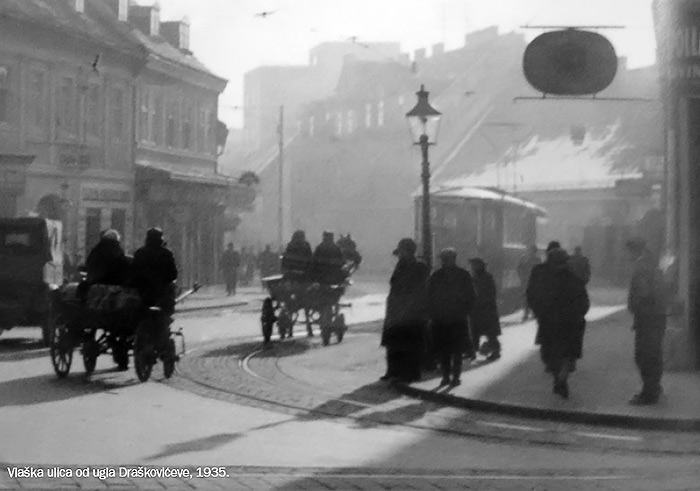 Zagreb trams on the corner of Vlaška and Draškovićeva streets in 1935 © Public domain
Zagreb trams on the corner of Vlaška and Draškovićeva streets in 1935 © Public domain
Lest we forget to give credit where credit is due, here are some interesting facts about Zagreb trams.
The Zagreb trams network was started in 1891 with the opening of the first line. Back then, the trams were pulled by horses - the electric tram didn't debut in Zagreb until 1910. The first journey started at the site of today's Technical Museum and the first track ran for some 8-kilometres. So fascinated were Zagreb residents with the introduction that some 20, 000 passenger journeys were made on the second day. The population of Zagreb at the time was 40, 000.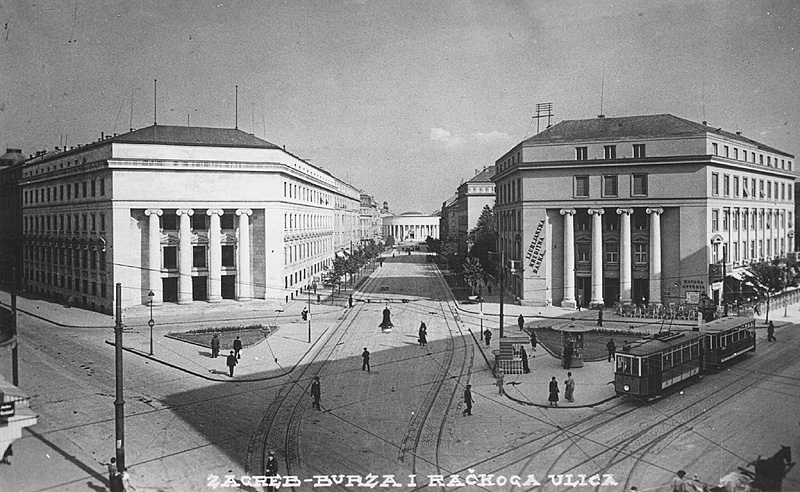 The route from Draškovićeva to Džamija in the 1930s © HappyV
The route from Draškovićeva to Džamija in the 1930s © HappyV
Osijek in Slavonia, east Croatia, was the first city in the country to have trams. The first international railway line into Croatia was built to facilitate holidays on the Kvarner coast, but the rail line ended in Rijeka. The upper echelons of Austro-Hungarian society who took this train were transported to their preferred destination – Opatija – by tram.
The most-modern low floor trams that now run in Zagreb were introduced in 2005.
There are two separate tram stations in Zagreb which have the same name – there are Heinzelova stations on the lines both to Savišće and Borongaj. The view from Džamija up to Draškovićeva and the cathedral in 1947 © Romák Éva
The view from Džamija up to Draškovićeva and the cathedral in 1947 © Romák Éva
The Zagreb trams network has 116.3 kilometres (72.3 miles) of metre gauge track. It is the same track all over the city, except for the line which runs north to Mihaljevac, which is unique. This line is both the fastest and the shortest in the Zagreb trams network. It services some of the most desirable Zagreb suburbs in which to live. But, of course. The inclusion of the Mihaljevac line brings the track total to 120 kilometres.
Children under the age of six do not require a ticket to ride on Zagreb trams.
There are six different types of tram currently running on the network. Zagreb residents have given nicknames to different models over the years – Đuro was named after a factory that made it, Bik, meaning bull, got its name because it was stronger than older models, Čeh was named after Czechoslovakia, the country where it was produced, Katica, Genšer and Zeko meaning bunny. Everyone likes the most modern trams in summer, because they have air conditioning but, in winter, city residents greet with joy the approach of older models on their route – the seats are heated to a toasty temperature.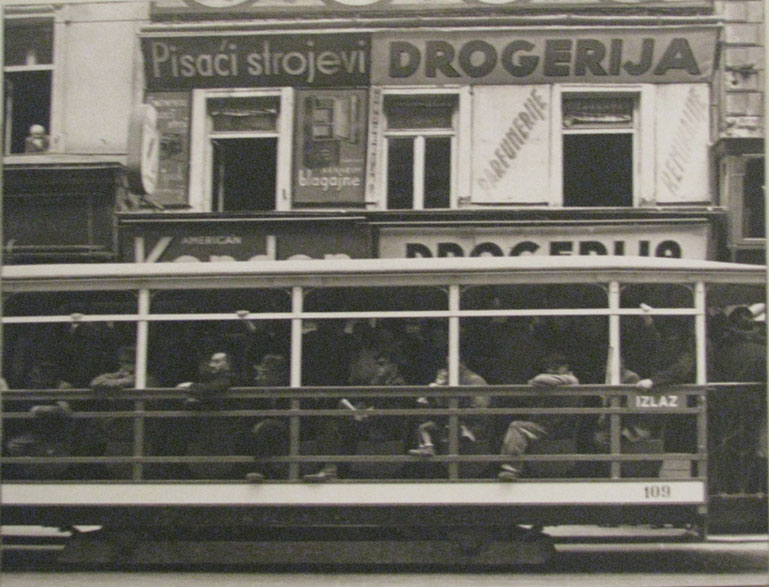 A photograph of how the open carriages of Zagreb trams used to look. The original of this photograph can be found in © Zagreb City Museum
A photograph of how the open carriages of Zagreb trams used to look. The original of this photograph can be found in © Zagreb City Museum
The longest single direction journey you can make on Zagreb trams is between Prečko in the west of the city and Dubec in the east. The journey takes around 76 minutes. You have to change tram only once to make this journey.
Apart from being the most environmentally friendly motorised public transport option in the city, the trams have massively contributed to Zagreb being a modern eco-friendly capital. Many city tram networks run down the middle of roads. While some lines in Zagreb are also placed here, many instead run at the sides of roads. This positioning – plus the way the lines sit in the road – make them problematic for cyclists. And this is partially the reason why Zagreb has 220 kilometres of dedicated cycle paths which exist not on the roads, like in other cities, but on the pavements.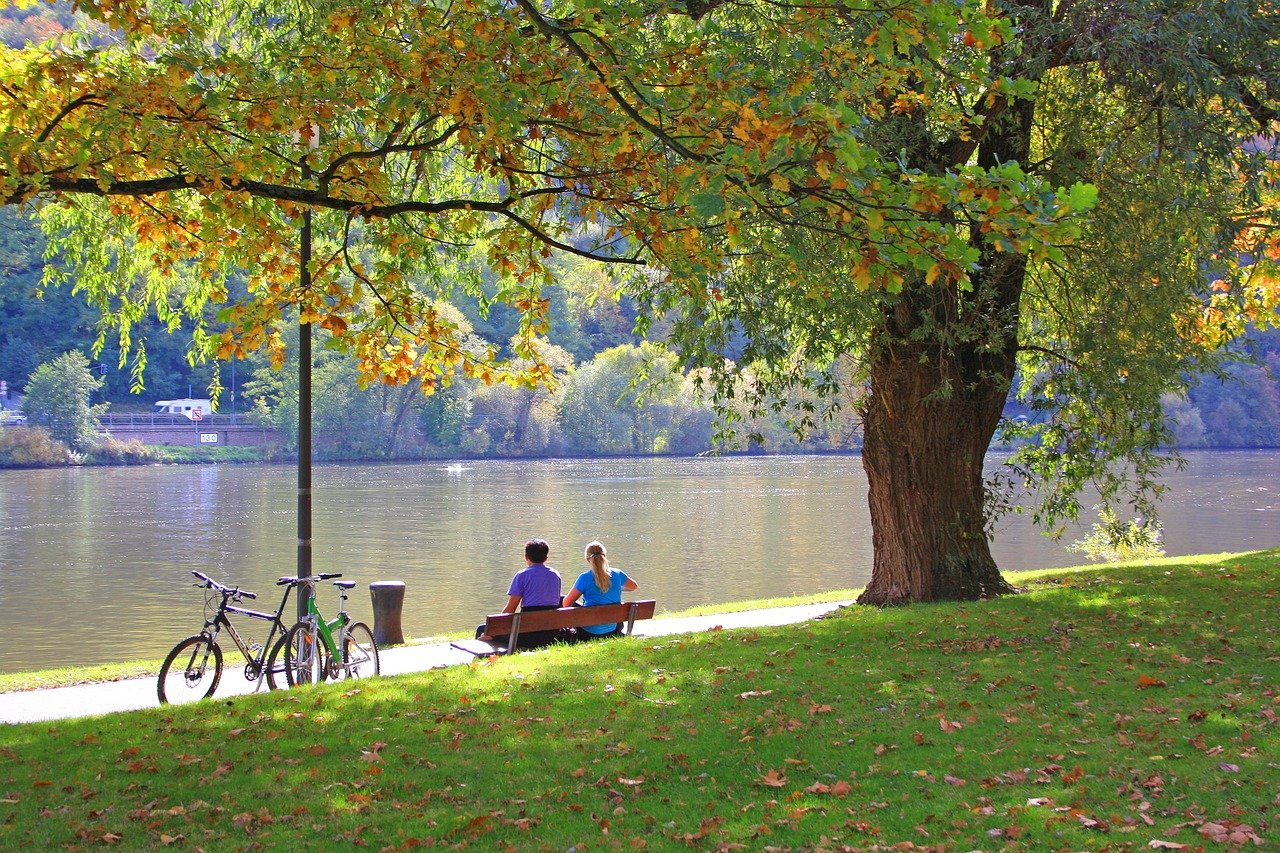 Zagreb's generous 220 kilometres of dedicated cycle paths come partially as a result of the positioning and construction materials of the Zagreb trams network © G Schneider
Zagreb's generous 220 kilometres of dedicated cycle paths come partially as a result of the positioning and construction materials of the Zagreb trams network © G Schneider
One of the world's worst tram accidents happened in 1954 on the Zagreb network. The tragedy took place on the old, steep stretch running near Mirogoj cemetery. Nineteen passengers were killed and thirty seven were severely injured.
During the day, each line runs on average every 5–10 minutes. Almost all stations on the Zagreb tram network sit on at least two lines.
Zagreb's tram network transported 204 million passengers in 2008.
A few years ago, the lowest fare tram ticket was 10 kuna. Zagreb trams were then often ridden by people without a ticket (and still are). The company who runs the tram network, ZET, decided to decrease the price of the lowest ticket to 4 kuna. Since doing so, many more people buy a ticket for Zagreb trams. You can travel for 30 minutes on any tram or trams with a 4 kuna ticket.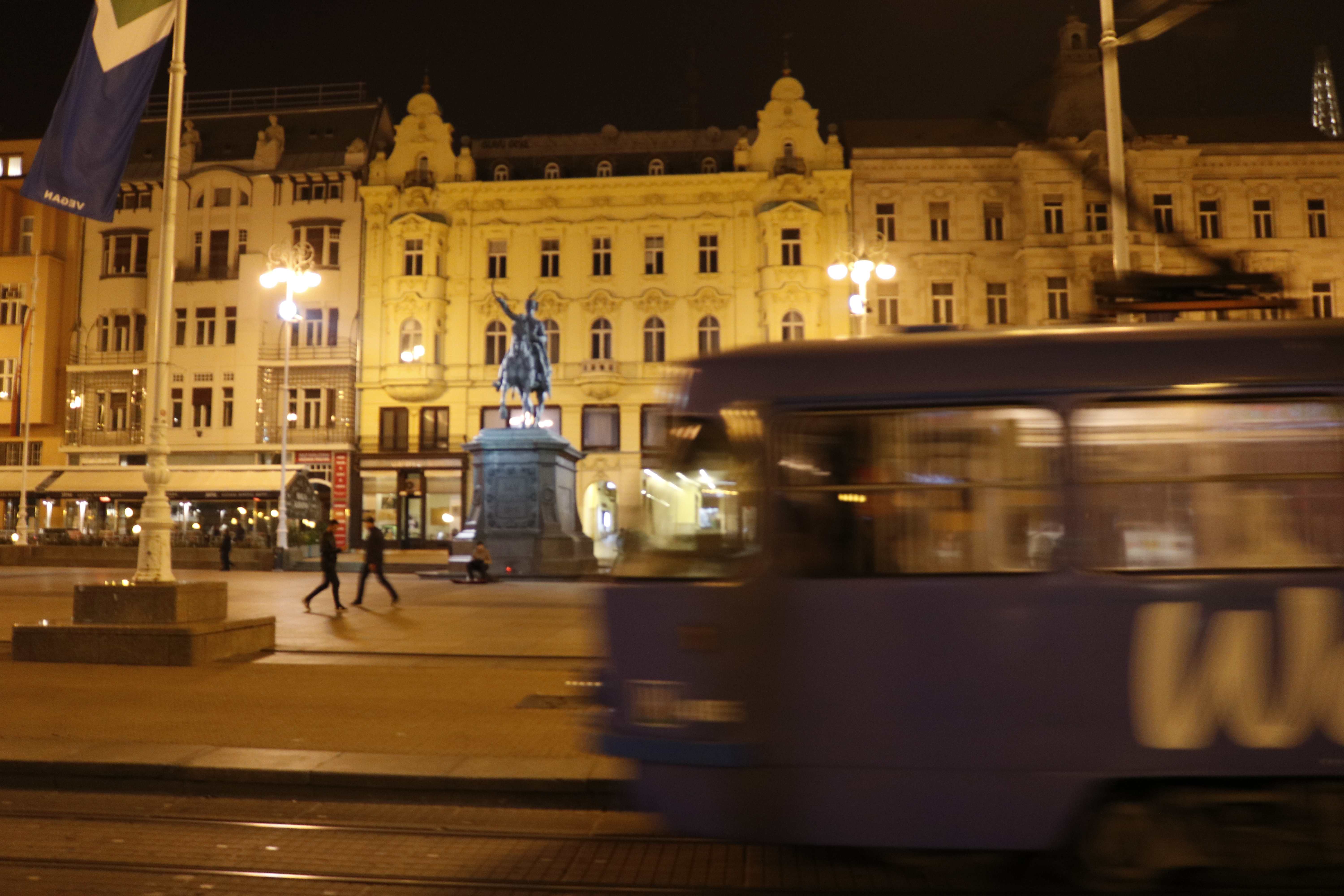 © Marc Rowlands
© Marc Rowlands
All uncredited photographs courtesy © ZET
Zagreb Streets Friendly For Feet - It's European Car Free Day Tomorrow
ZAGREB, September 21, 2020 - Residents and visitors to the Croatian capital will tomorrow learn how Zagreb street life was historically, as the city centre banishes almost all vehicles for European Car Free Day
What would Zagreb's residents of the past think of the city if they saw it today? The Croatian capital's boundaries now extend many kilometres into the surroundings, the huge Sava river is no longer any impediment to travel. The people of the city now live on both sides. Skyscrapers score the sky and well over half a million people can be seen on its streets, roads and highways.
Apart from the size and the unfamiliar building materials, the biggest shock would probably be the speed of the city. Buses and cars race down multiple-lane avenues and trams take you into almost every neighbourhood you'd want to visit. Kaptol, Zagreb in 1905, when almost every day looked like European Car Free Day
Kaptol, Zagreb in 1905, when almost every day looked like European Car Free Day
Tomorrow, Zagreb will return to a pace more familiar to former inhabitants as the city observes European Car Free Day. Motor vehicles will be banned from much of the city's centre between 8 am and 8 pm.
The area of the city centre observing European Car Free Day has the following boundaries; Trg bana Josipa Jelačića - Jurišićeva - Palmotićeva (western edge) - Boškovićeva (northern edge) - Hebrangova (northern edge) - Gundulićeva (eastern edge) - Ilica (northern edge) - Mesnička (eastern edge to Streljačka) - Mesnička - Demetrova - Ilirski trg - Radićeva - Trg bana Josipa Jelačića.
These streets form some of the oldest parts of Zagreb. Long have they been trodden by the pedestrians to whom they'll return tomorrow. Those travelling into the centre by car must park on the outskirts and take public transport into the heart of the city. Trams, taxis and buses will operate as normal.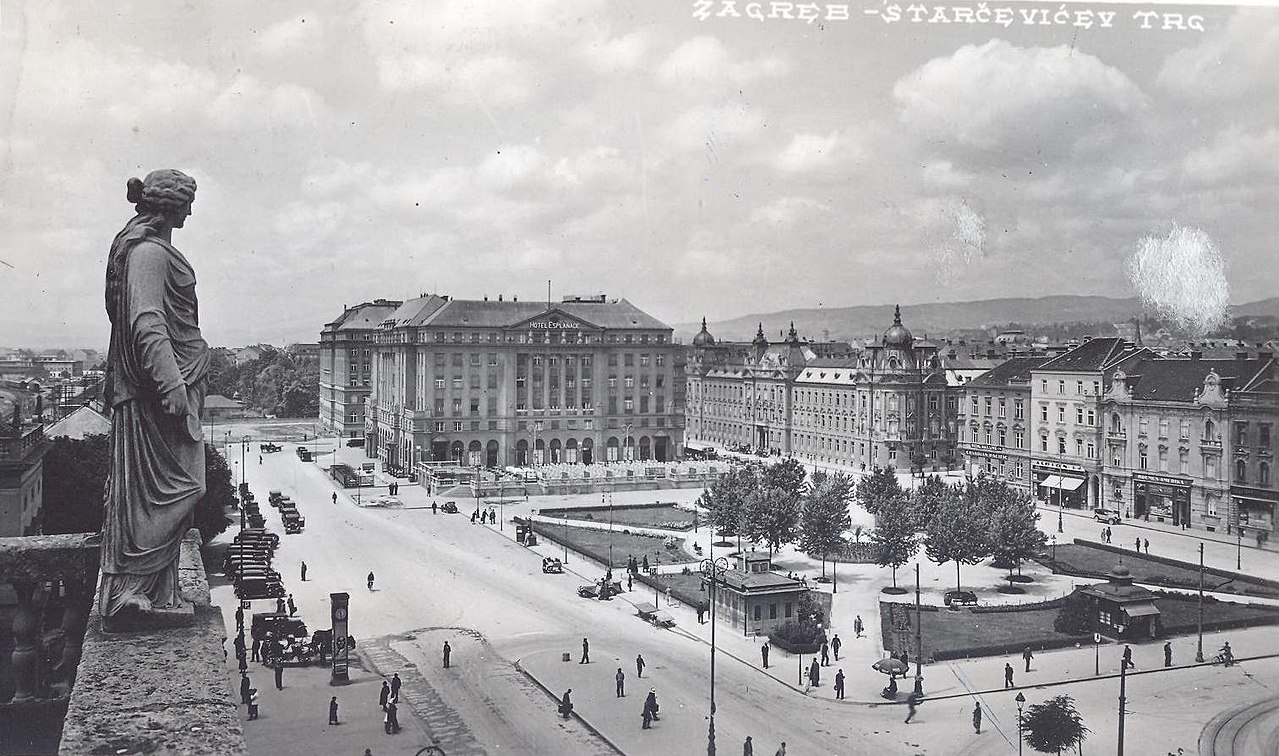 Cars began to be seen more regularly in Zagreb during the first half of the 20th-century. Not so much a European Car Free Day as a Croatian Tram Free Day - the city's famous tram network wasn't nearly so developed back then. The first city in Croatia to have trams was actually Osijek, who introduced a horse-pulled tram network in 1884.
Cars began to be seen more regularly in Zagreb during the first half of the 20th-century. Not so much a European Car Free Day as a Croatian Tram Free Day - the city's famous tram network wasn't nearly so developed back then. The first city in Croatia to have trams was actually Osijek, who introduced a horse-pulled tram network in 1884.
The observance of car-free days is actually over 65 years old, although originally they were introduced in response to oil crises, not for environmental reasons. The more modern reason for having such days is to return city streets to pedestrians. Car-free days have taken place independently in European nations since the mid-1990s, and it 2000 they became aligned on the fixed date of 22 September. European Car Free Day is also a car-free day in many other countries outside of Europe, although this continent is the only one to currently observe it throughout its boundaries.
All uncredited photos lie within the public domain.
For the latest travel info, bookmark our main travel info article, which is updated daily.
Read the Croatian Travel Update in your language - now available in 24 languages
ZET: Zagreb Trams Operating Along Ilica, Ban Jelacic Square Again
The Zagreb earthquake which struck back in March this year caused a huge amount of disruption in the Croatian capital and the tram lines were far from immune to it. Thankfully, as of today, all of ZET's trams will be running as normal once again, operating along Zagreb's most famous street (Ilica) and passing Ban Jelacic Square, which wasn't possible for several months.
As Poslovni Dnevnik writes on the 2nd of July, 2020, all of ZET's tram lines will run according to the valid summer timetable as of today, the 2nd of July, 2020.
After the expert services performed detailed inspections and eliminated the dangers that threatened the lines after the earthquake, and the ZET teams checked the correctness of the tram tracks and the accompanying voltage network, the city's trams will begin running along Jurisiceva, Ilica, Praska and past Ban Jelacic Square again today, ZET reported.
''As of today, all of the tram lines that operated on the altered routes are returning to their usual routes,'' ZET's statement reads.
ZET reports that line 13 (Kvaternikov trg - Zitnjak) is returning to operations, while at the same time the extraordinary bus lines 608 (Trg zrtava fasizma - Vlaska - Kvaternikov trg) and 611 (Glavni kolodvor - Praska) will end.
The final works on the regular maintenance of the tram tracks in the central square are still in progress, but they will no longer affect the use of the tram lines in those areas, which was the case since the earthquake struck earlier this year.
"On this occasion, we once again call on passengers to abide by the Decision of the National Civil Protection Headquarters on the obligation to wear a medical mask or face mask when using public transport, and ZET will, as before, disinfect the vehicles three times a day and ventilate them to reduce the possibility of spreading the coronavirus infection,'' they state from ZET.
For more on public transport in Zagreb and beyond, follow our travel page.
Zagreb Roundabout Complete, New Tram Lines on Horizon?
As Poslovni Dnevnik writes on the 18th of January, 2020, the Zagreb roundabout (Remetinec roundabout) is now complete and the last little bits of work on the lighting are now coming to an end, the final opening is expected, and when things are already ''stuck'' in good shape, why not continue working immediately to the west of the large Zagreb roundabout?
That's the idea of the councilors of the City District of Novi Zagreb - West, who sent the City of Zagreb an initiative for a new tram line to Lanište and Blato.
"So far, the priority in the area of our neighbourhood has been a new roundabout that will solve the problem of traffic jams in that part of the city, but more residential buildings are planned to be built in Lanište, which will increase the number of cars going on the Zagreb roundabout. A tram is a much more efficient solution,'' says Jadranko Baturić, adding that the tram line would run 150 to 200 metres from Arena Zagreb, which would relieve traffic during concerts and would also benefit residents of Brezovica, Ježdovac, Hrvatski Leskovac, Botinac and Odra, whose residents could leave their cars at the starting station and travel further to their destinations with the use of public transport, Vecernji list reports.
"The city district is ready to participate in the works, and given that a tram line is the most environmentally friendly solution, I'm sure we could get money from the European Union, which co-finances 80 percent of projects which are having an environmental impact," says Baturić, adding that he will also discuss the initiative with Mayor Milan Bandić, who, he points out, will surely speed up the whole procedure as he will recognise it as a big plus for the capital city.
"Novi Zagreb - West is the fastest growing quarter in terms of population, our numbers have increased by 40 percent in the past ten years, there are currently 79,000 of us," Baturić says.
The new tram line, which should be between five and six kilometres long, is also important for the future Blato Hospital, and would also raise property prices.
"In any case, we sent a letter to the City of Zagreb and we were told that the project was being prepared. It may be that they're waiting for the start of the construction of residential buildings and the completion of work on the hospital to start the tram line, but it must be done before," Baturić says.
However, the conceptual design and implementation of the project documentation and the construction of the tram line extension to Lanište, according to the head of the Office for Construction Dinko Bilić, can only come about when the exact position of the tram turning point in the Blato area is defined.
"This solution will create the preconditions for the extension of the tram network along Jadranska avenija (Adriatic avenue) to Lanište, and a good connection of the western urban areas with the southern bank of the Sava river is planned with another line to the future turning point in Blato, ie, via the extended Vrapčanska, Jarun bridge and the future Vatikanska street,'' concluded Bilić.
Make sure to follow our dedicated lifestyle page for more.
Croatia and EU Invest Heavily in Zagreb Tram Network Reconstruction
The general aim is to modernise and improve the quality of Zagreb's tram network, and this particular project does not include the procurement of more trams which is a move that was announced a long time ago.
As Poslovni Dnevnik/Marija Crnjak writes on the 30th of May, 2019, a total of 210 million kuna from EU funds and a small part of the Croatian state budget will fund the reconstruction and the modernisation of part of the capital's tram infrastructure, and the Zagreb Electric tram (ZET) project should be completed by 2023, as was confirmed by the Ministry of Regional Development and EU funds.
The general objective of the project is to modernise and improve the quality of Zagreb's existing tram network in order to properly maintain a good level of public transport services for the City of Zagreb at the EU level regarding safety, reliability, accessibility of persons with disabilities and a significant reduction of negative CO2 emissions.
"The reconstruction of the tram infrastructure includes eleven tramway sections in the length of 8,194 metres, as well as track dismantling, track supply and installation, cable drainage and similar works. The reconstruction and modernisation of these correctional stations will include the procurement and installation of new equipment, works on the reconstruction of the objects themselves and the installation of a cable network,'' the competent ministry explained.
Along with the works, a study on the development of the tram traffic of the City of Zagreb is planned, which aims to analyse the overall state of the tram infrastructure and to introduce measures and targets for its improvement, which should ultimately lead to new projects to be funded from EU funds. Of course, the plan is to fund the project's self-promotion through the development of a communication strategy, the visual identity of the project, slogans and the promotion of activities to further highlight the visibility of the project itself.
As stated in the call for co-financing of the modernisation of Zagreb's tram infrastructure, the maximum amount of grants that can be awarded for the project proposal is up to 210 million kuna, with total available grants from the Cohesion Fund standing at 178.5 million kuna. The percentage of co-financing of eligible costs from Cohesion Fund resources can be up to 85 percent and the mandatory share of national co-financing of eligible costs of at least 15 percent will be provided from the state budget.
The pre-defined applicant is ZET, who has already applied for the call, as was confirmed by that particular Zagreb city company.
For ZET, the modernisation of the capital's trams will ultimately result in an increase in the number of passengers using public transport. As we've come to know, this call refers only to the infrastructure, not to the procurement of trams which has been being discussed in Zagreb for several years now. Whether or not this project is being eagerly awaited by Croatian companies was recently confirmed in a conversation between Poslovni Dnevnik and Darinko Bago, President of the Končar Group's management board.
As it is known, Končar has developed trams, and in Zagreb, 142 of Končar's trams are already in operation. As Bago pointed out, according to city studies, Zagreb should acquire more than sixty new trams, replacing the old and overworked trams that have been driving around the city for around half a century.
''We're very interested in that," Bago stated.
The time frame in which this project can be expected hasn't yet been revealed.
Make sure to follow our dedicated lifestyle page for much more. If it's just Zagreb you're interested in, give Total Zagreb a follow or check out Zagreb in a Page.
Click here for the original article by Marija Crnjak for Poslovni Dnevnik
Sexist Posters in Zagreb Trams Cause Controversy
Since early morning, social networks users in Croatia are sharing a photo of an unbelievable poster which has been photographed in one of Zagreb trams. The “educational” poster in question should supposedly warn users about the harmfulness of drinking alcohol. However, many believe that the posters actually spread sexism, reports Telegram on January 3, 2019.
The first section, which refers to men, claims that alcohol has a bad influence on sex life and reproduction of men and reduces their sexual desire, sexual power and erection. That, they say, results in a lack of confidence.
This is followed by a second section, rather absurd, warning that drunk women like to engage in sex with random people. The poster says, "With women, alcohol leads to irresponsible sexual intercourses with unknown persons, menstrual cycle disorders and pregnancy. Through the placenta, alcohol also enters the blood of a child which can cause physical disabilities and mental retardation, the so-called fetal alcohol syndrome. "
The ZET public transportation company has confirmed that the posters can be found in its trams. Asked how did they get there, they said that the question should be sent to the B1 company that places posters in trams. The company said that the posters are part of an educational campaign and that they have been prepared by the Zagreb City Office for Health. Reporters have contacted the head of the City Office for Health, Vjekoslav Jeleč, but his answer is still pending.
According to info on the poster itself, it was created together by the Zagreb City Office for Health and the Centre for Education, Counselling and Personal Development CEDAR. The centre explained that the poster is part of the public drive “Healthy Choice”, which is complementary to the preventive project “Healthy!” which they have been implementing together with secondary schools since 2012. The campaign is aimed at preventing high school students from experimenting with alcohol.
Centre president Ksenija Rissi said that high school students made the posters and that they "wanted to send a message to their peers about potential direct and indirect harmful effects of drinking alcohol.”
CEDAR is, according to its website, a centre that "advises, educates and empowers individuals, families and groups in order to achieve a better quality of life and to have an active and responsible relationship with themselves and their surroundings.”
The centre thanks its donors who have supported the implementation of their projects and programmes, and the list includes, among others, the City of Zagreb, its Offices for Social Welfare and Health, and the Ministries of Family and Health.
More news on Zagreb can be found in our dedicated section.
Translated from Telegram (reported by Vedran Vrabec).
ZET to Introduce Free Wi-Fi in All Trams and Buses by End of April
The project announced in 2016 is finally getting implemented in public transport
Tram Line Mihaljevac-Dolje Opened for Traffic
After six months of renovation, tram line 15 is finally open for traffic


